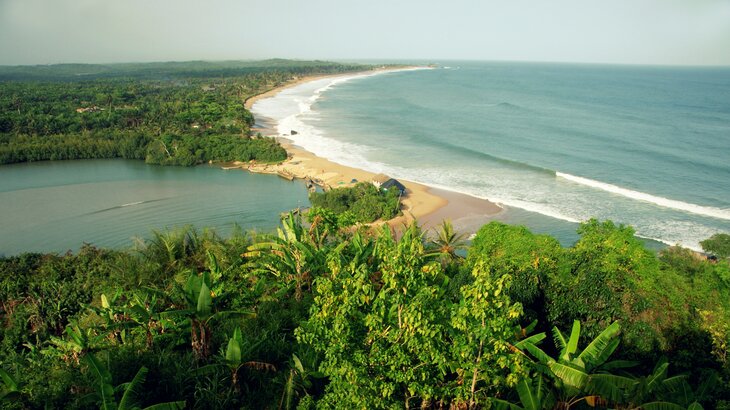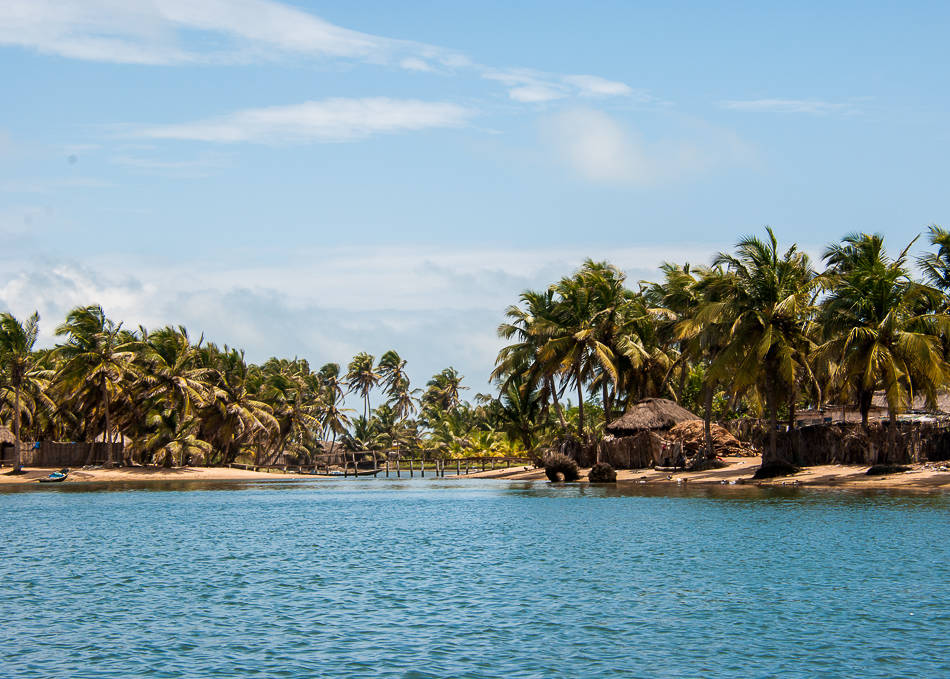Ghana has a typically tropical climate due to the geographical proximity to the equator and low elevations – the entire country lies below 1,000m (3300ft). Daytime temperatures are high throughout the year, approaching or surpassing 30°C (86°F) on most days, and humidity is also very high, especially along the coastal areas which are Greater Accra Region, Western Region and the Volta Region. Temperatures tend to drop to around 20°C (68°F) at night time, more noticeably in the relatively dry north than the humid south. The most temperate part of Ghana is the highlands area flanking the Volta River Basin, which is often pleasantly cool after dusk.

There are two rainy seasons, which starts from March to July and from September to October. During this rainy season, downpour is recorded the most in the forest reserves, mountainous areas and southern parts of Ghana. With some areas receiving in excess of 2,000mm each year, but the drier north more typically receives about 800mm annually. The capital Accra together with the coast running east to Togo and Benin that lies within the Dahomey Gap, a tract of savannah that receives relatively little rain and divides the Upper Guinean forests (running westward from central Ghana) from the Lower Guinean forests (running southward from Nigeria southward to the Congo). Ghana also experiences a noteworthy climatic phenomenon that is the harmattan winds, which blow in from the northeast from December to March, bringing dust from the Sahara and reducing visibility to as little as 1km (0.6 miles).

Ghana is a fine place to visit at all times of year, but if you have the choice, aim for the northern part of Ghana within October through to April, as humidity is lowest and the weather is typically quite dry. There are also fewer mosquitoes (and a decreased risk of contracting malaria), dirt roads are in better condition, and there is less likelihood of you or your luggage being drenched in an unexpected storm. However, it’s also favorable to visit the Southern, Western or Central part of Ghana within July through to September. The weather within that period is quite humid thus some traditional culture turns to celebrate marked festivals of the bumper harvest of the graced rainy season.

It is advised that Light and loose clothes is the best way to go in this humid tropical climate. When visiting Ghana, bring light trousers or skirts made of a natural fabric such as cotton, combined with a stash of cotton T-shirts, and plenty of socks and underwear. Also note that, clothes and footwears should be from natural fabrics to help prevent fungal infections. Ghanaians are relatively relaxed about dress codes.



